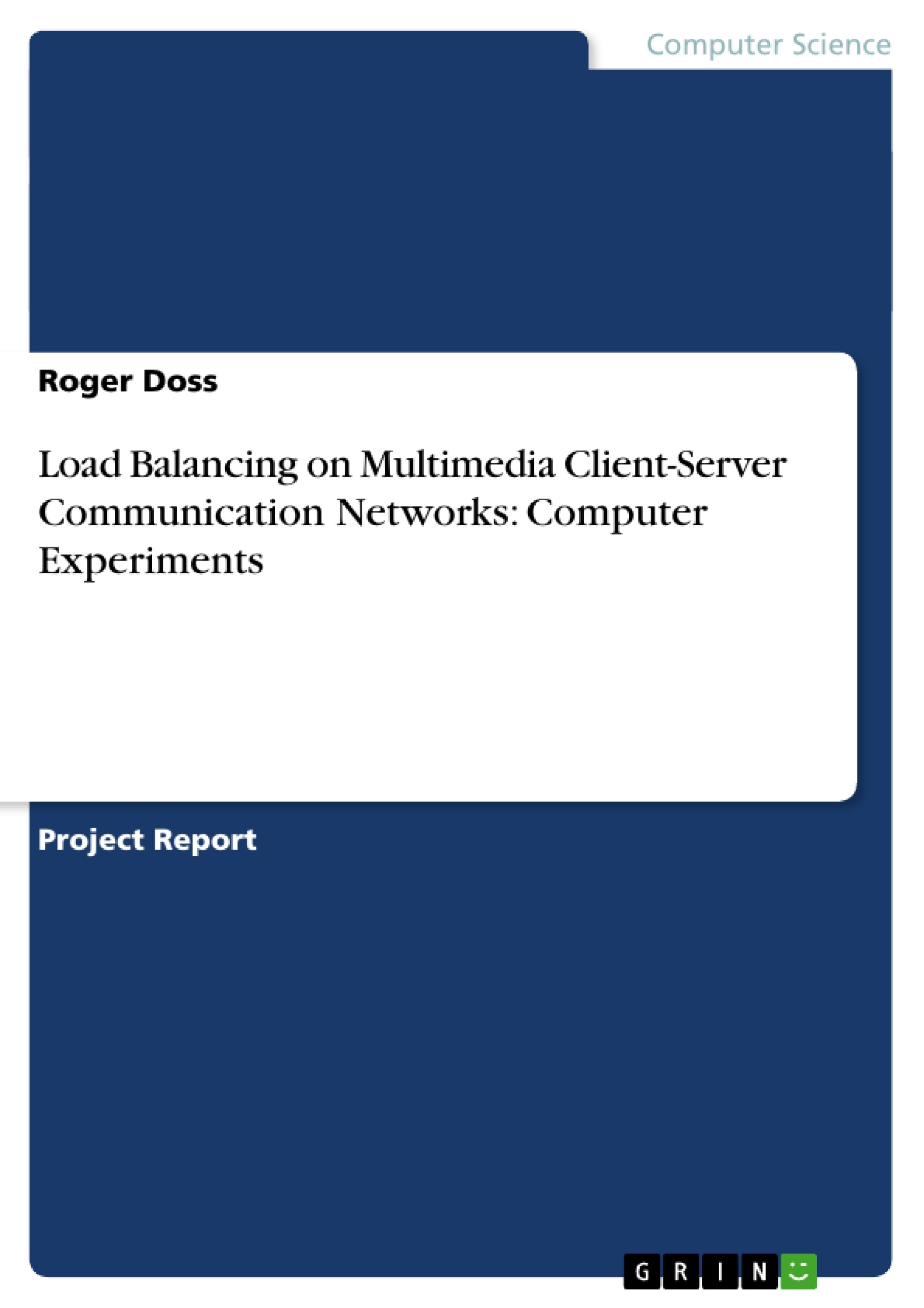To design and implement an algorithm which, given the inputs of work cost, backlogs, and tasks for multiple servers, produces an output of work distributions (loads) for all servers and tasks in the system such that the time spans are minimal and, if possible, balanced. That is, the algorithm finds the optimal distribution for M tasks and N servers.
The project focuses on an algorithm for three server load balancing, and then attempts to generalize the algorithm to four and five servers. The system being considered consists of multiple servers represented as rows of a matrix, and multiple tasks, represented as columns of a matrix. Backlogs indicate the amount of work already being handled by a given server. Time spans indicate
the run time associated with running several tasks on a server. Tasks can be of any type of work; however, the algorithm is conceptually focused on multimedia tasks. The data initially has been provided as integers. The system is mathematically modeled as a system of linear inequalities, therefore it is a member of the “Linear Programming” class of problems.
Inhaltsverzeichnis (Table of Contents)
- Introduction
- Problem Statement
- Objectives
- Results of Experiments
- Experiments with Three Servers and Five Tasks
- First Data Set
- Second Data Set
- Third Data Set
- Experiments with Three Servers and Six Tasks
- First Data Set
- Second Data Set
- Third Data Set
- Experiments with Four Servers and Five Tasks
- First Data Set
- Second Data Set
- Third Data Set
- Experiments with Four Servers and Six Tasks
- First Data Set
- Second Data Set
- Third Data Set
- Averages
- Average Iterations for Load Redistributions
- Average CPU Time Required for Load Balancing
- Selected Problems with Five Servers and Seven Tasks
- Experiments with Three Servers and Five Tasks
- Analysis of Results
- Description of the Implementation
- A Load Balancing Algorithm Source Code
- Computing Averages Source Code
Zielsetzung und Themenschwerpunkte (Objectives and Key Themes)
This paper investigates the effectiveness of load balancing in multimedia client-server communication networks through a series of computer experiments. The main objective is to evaluate the performance of different load balancing algorithms under varying network conditions. Key themes explored in this work include:- Performance evaluation of load balancing algorithms
- Impact of network parameters on load balancing effectiveness
- Analysis of different load balancing strategies
- Optimization of load balancing techniques for multimedia applications
- Implementation of a load balancing algorithm in a real-world setting
Zusammenfassung der Kapitel (Chapter Summaries)
The introductory chapter outlines the problem statement and research objectives. It defines the scope of the study and identifies the key challenges associated with load balancing in multimedia client-server communication networks. The results of the experiments conducted are presented in detail in chapter two. This chapter analyzes the performance of the load balancing algorithm under different network configurations, including variations in the number of servers, tasks, and data sets. The experiments focus on evaluating the algorithm's efficiency in terms of iterations for load redistribution and CPU time required for load balancing. Chapter three provides a comprehensive analysis of the experimental results obtained in chapter two. This section identifies key trends and patterns observed in the data, and discusses the implications of these findings for the effectiveness of load balancing strategies. Chapter four describes the implementation of the load balancing algorithm used in the experiments. It explains the design and architecture of the algorithm, highlighting its key components and functionalities. This section provides insights into the practical aspects of implementing load balancing solutions for multimedia applications.Schlüsselwörter (Keywords)
The central focus of this work lies in the area of load balancing within multimedia client-server communication networks. Key terms and concepts explored include load balancing algorithms, performance evaluation, network parameters, multimedia applications, CPU time, and implementation.- Quote paper
- Roger Doss (Author), 2001, Load Balancing on Multimedia Client-Server Communication Networks: Computer Experiments, Munich, GRIN Verlag, https://www.grin.com/document/204152



